
Traditional Japanese Summer Festivals in Tokyo
- Written by: LIVE JAPAN Editor
In Japan, summer means festival season! Enjoy an array of Japanese traditions with dances, music, and portable shrine parades filling the hot summer months with excitement and joy. Beat the heat with happiness as you savor local culture dating back hundreds of years, alive and well in Tokyo's modern age!
- Table of Contents
July Events
Kagurazaka Festival (July 23-26)

Hozuki Market: July 23rd & 24th
Head over to the Bishamonten Zenkoku Temple grounds on July 23rd and 24th for the beautiful Hozuki Market. You'll find stunning Chinese lantern plants on display and for sale. While you're there, be sure to sample some delicious treats from the local eateries at their food stalls.
Awa Odori: July 25th & 26th
Following the market, don't miss the energetic Awa Odori performances on July 25th and 26th. This traditional Buddhist dance from Tokushima Prefecture features about 20 participating groups each day. Watch the agile dancers parade along Kagurazaka Street in an event that's truly a must-see!
- Venue: Along the main street in Kagurazaka
- Dates & Times: July 23–24, 2025 – Hozuki Market 5 PM–9 PM / July 25–26, 2025 – Awa Odori Dance Festival 7 PM–9 PM / July 26, 2025 – Children's Awa Odori Dance 6 PM–7 PM
- Official website
-

-
Address
3, Kagurazaka, Shinjuku-ku, Tokyo, 162-0825
View Map -
Nearest Station
Iidabashi Station (JR Chuo Main Line / Tokyo Metro Tozai Line / Tokyo Metro Yurakucho Line / Tokyo Metro Namboku Line / Toei Oedo Line)
1 minute on foot
- Phone Number 03-3209-1111
-
Address
3, Kagurazaka, Shinjuku-ku, Tokyo, 162-0825
Shinjuku Eisa Festival (July 26)

Eisa is the traditional Bon Odori dance of Okinawa Prefecture, performed during Obon—a Buddhist festival that honors the spirits of ancestors. The Shinjuku Eisa Festival brings together 26 groups to showcase Okinawa’s vibrant Eisa performances, featuring colorful costumes, dynamic taiko drumming, and spirited calls of encouragement. The lively event takes place around both the East and West Exits of Shinjuku Station. Come experience a refreshing wave of Okinawan culture and join in the celebration of summer in Japan!
- Venue: Around Shinjuku Station East Exit and West Exit
- Date/Time: July 26, 2025, from noon to 7 PM
- Official website
-

-
Address
3-38-1 Shinjuku, Shinjuku-ku, Tokyo, 160-0022
View Map -
Nearest Station
Shinjuku Station (JR Shonan Shinjuku Line / JR Yamanote Line / JR Chuo Main Line / JR Saikyo Line / Tokyo Metro Marunouchi Line / Toei Shinjuku Line / Toei Oedo Line / Keio Line / Keio New Line / Odakyu Odawara Line)
- Phone Number 03-3342-5988
-
Address
3-38-1 Shinjuku, Shinjuku-ku, Tokyo, 160-0022
Nogi Shrine Summer Festival (July 30)

The Nogi Shrine Summer Festival is an exciting community event that’s not only about food and fun but also about learning. It’s a great place for families to experience a Japanese summer festival while exploring culture and history at both Nogi Shrine and Nogi Kaikan.
Look forward to savoring kakigori (shaved ice) and cotton candy while trying your hands at balloon fishing, a classic game of Japanese summer festivals! Besides that, events such as picture story shows and performances by a mixed chorus are held to entertain the visitors. And don’t miss out on browsing the festival’s antique market to find a one-of-a-kind souvenir!
- Venue: Nogi Shrine area
- Date/Time: July 30, 2025, from 2 PM - 8 PM
- Official website
-

-
Address
8-11-27, Akasaka, Minato-ku, Tokyo, 107-0052
View Map -
Nearest Station
Nogizaka Station (Tokyo Metro Chiyoda Line)
1 minute on foot
- Phone Number 03-3478-3001
-
Address
8-11-27, Akasaka, Minato-ku, Tokyo, 107-0052
August Events
Toro Nagashi: The Asakusa Summer Night Festival (August 10)

This beautiful festival dates back to the year 1946, when hundreds of paper lanterns were set down on the Sumida River as a memorial to the victims of the Second World War. After that, the Toro Nagashi festival didn't take place for a while during shore protection work on Sumida River but it was revived in 2005. The lanterns travel down the river from the Sumida Park River Terrace, each carrying a thought of the person who set it down. The soft light of the lanterns that glitter on the water's surface creates a warm, almost mysterious atmosphere. Tourists are welcome to take part in the festival and you can register for a lantern yourself on the same day that the festival is held on.
- Venue: Riverbank close to Asakusa Station exit 5 (Ginza Line)
- Date/Time: August 10, 2025 from 6:30 PM - 8:15 PM
- Official website
-

-
Address
Sumida-ku, Tokyo, 131-0033
View Map -
Nearest Station
Asakusa Station (Tokyo Metro Ginza Line / Toei Asakusa Line / Tobu Isesaki Line (Tobu Skytree Line) / Tsukuba Express)
5 minutes on foot
-
Address
Sumida-ku, Tokyo, 131-0033
Tomioka/Fukagawa Hachiman Festival (August 16-17)

The Fukagawa Hachiman Festival, held each August at Tomioka Hachimangu Shrine in Tokyo’s Koto Ward, is one of the Three Great Festivals of Edo, alongside the Kanda Festival (held on odd-numbered years in mid-May) and Sanno Festival (held each June). This historic celebration dates back to the Edo period and fills the entire neighborhood with excitement.
The festival follows a unique three-year cycle.
The Main Festival (本祭り): Held once every three years, this grand event features around 50 portable shrines parading through the streets. It's best known as the “Water-Throwing Festival,” where spectators douse the mikoshi bearers with water while shouting “Wasshoi, wasshoi!” The highlight is the appearance of the massive Nonomiya Mikoshi, which weighs about two tons. The next Main Festival will take place in 2026.
Kage Festival (陰祭): Held the year after the Main Festival, this version is somewhat smaller in scale but still festive. It features the procession of the Second Shrine’s mikoshi, performances within the shrine grounds, and a lively array of food stalls.
Gohonsha Festival (御本社祭): The year before the Main Festival focuses on solemn rituals and ceremonies performed by shrine priests, without any mikoshi processions. The Gohonsha Festival will be held in 2025.
- Venue: Area around Monzen-nakacho
- Date/Time: August 16-17, 2025
- Official website
-

-
Address
1-2-3, Tomioka, Koutou-ku, Tokyo, 135-0047
View Map -
Nearest Station
Monzen-Nakacho Station (Tokyo Metro Tozai Line / Toei Oedo Line)
3 minutes on foot
- Phone Number 03-3642-1315
-
Address
1-2-3, Tomioka, Koutou-ku, Tokyo, 135-0047
Roppongi Hills Bon-Odori (Late August)

This beloved summer tradition drew crowds of over 60,000 people during its three-day run in 2017, and remains popular to this day. The main dance takes place at the Roppongi Hills Arena and begins with “Ropponjin Ondo,” an original song that means “the dance of the people of Roppongi.” As dancers circle the traditional wooden scaffold to its rhythm, Roppongi’s Obon festivities officially kick off.
Throughout the festival, the shops and restaurants in Roppongi Hills stay open, offering a perfect chance to enjoy a gourmet bite between dances. Some special food items are even available exclusively during the Obon period, making it a treat for both your eyes and your appetite.
- Venue: Roppongi Hills area
- Date/Time: Late August (*2025 dates have not been released; see the official website for updates)
- Official website
-

-
Address
6-10-1, Roppongi, Minato-ku, Tokyo, 106-6108
View Map -
Nearest Station
Roppongi Station (Tokyo Metro Hibiya Line / Toei Oedo Line)
0 minute on foot
- Phone Number 03-6406-6000
-
Address
6-10-1, Roppongi, Minato-ku, Tokyo, 106-6108
Harajuku Omotesando Genki Matsuri: Super Yosakoi 2025 (August 23-24)

The Yosakoi Festival originated in Kochi Prefecture in 1954 as part of efforts to revitalize the local economy. Dancers in colorful costumes perform high-energy routines using naruko—small wooden clappers that add rhythm and excitement to the movements. This dynamic style quickly spread across Japan, and Yosakoi festivals are now celebrated nationwide.
The Harajuku Omotesando Genki Matsuri: Super Yosakoi began in 2001 as a festival dedicated to Meiji Shrine. In 2024, it featured 104 teams and drew massive crowds of spectators. The event takes place in the vibrant area around Harajuku and Omotesando Stations.
- Venue: Meiji Jingu
- Date/Time: August 23-24, 2025
- Official website
-

-
Address
1-1, Yoyogikamizonocho, Shibuya-ku, Tokyo, 151-8557
View Map -
Nearest Station
Sangubashi Station (Odakyu Odawara Line)
- Phone Number 03-3379-5511
-
Address
1-1, Yoyogikamizonocho, Shibuya-ku, Tokyo, 151-8557
Azabu-juban Summer Night Festival (August 23-24)

As one of Tokyo's most popular festivals, the Azabu-Juban Summer Night Festival attracts around half a million visitors every year. Attendees enjoy strolling down the street and indulging in various snacks throughout the night. Azabu-Juban is renowned as a shopping street, home to many famous luxury and brand stores near the numerous embassies. The festival also features an area called "Oragakuni Jiman," which showcases over 50 cities, towns, and regions from across Japan, offering regional produce and specialties. Visitors can savor local dishes, sake, and beer. Additionally, the event includes a stage at Patio Juban where dance and music performances entertain the crowd.
- Venue: Patio Juban and surrounding area
- Date/Time: Date: August 23-24, 2025, from 3 PM - 9 PM
- Official website
-
Patio Juban, etc.パティオ十番、ほか
- Address 2-3-10, Azabujuban, Minato-ku, Tokyo, 106-0045
Asakusa Samba Carnival (August 30)

Japan’s largest samba parade heats up the streets of Asakusa every summer. The first Asakusa Samba Carnival Parade Contest was held on August 29, 1981, and after years of evolution and experimentation, it has become a beloved summer tradition that now draws crowds of around 500,000.
In 2025, the festival celebrates its milestone 40th edition. To mark the anniversary, this year’s event will feature not only the dynamic samba parade contest, where teams from across Japan showcase dazzling costumes and choreography under self-chosen themes, but also a special Brazilian goods fair held alongside the main festivities.
- Venue: Area around Asakusa Station
- Date/Time: August 30, 2025, from 12 PM - 5 PM
- Official website
-

-
Address
Budo-Kaminari-dori, Taito-ku, Tokyo, 110-0000
View Map -
Nearest Station
Asakusa Station (Tokyo Metro Ginza Line / Toei Asakusa Line / Tobu Isesaki Line (Tobu Skytree Line) / Tsukuba Express)
- Phone Number 03-3847-0038
-
Address
Budo-Kaminari-dori, Taito-ku, Tokyo, 110-0000
September Events
Daradara Festival (Mid-September)

The Daradara Festival is one of Japan’s longest shrine festivals, lasting from the middle to the end of September, offering a large variety of traditional performances and dances. The highlight of these celebrations takes place on the 16th, a day that is entirely dedicated to Japanese court music and dances. In ancient times, the festival was also known as the “ginger market,” as ginger was sold extensively on the shrine grounds and its vicinity. This is because, the shrine used to be surrounded by a vast ginger field and thus, many people offered ginger roots to the Shinto deity enshrined within. Even today, fresh ginger roots are being sold every day. Make sure to get your hands on some - a person who regularly consumes some ginger is said to never ever catch a cold!
- Venue: Daimon Station area
- Date/Time: Mid-September (*2025 dates have not been released; see the official website for updates)
- Official website
-

-
Address
1-12-7, Shibadaimon, Minato-ku, Tokyo, 105-0012
View Map -
Nearest Station
Hamamatsucho Station (JR Keihin-Tohoku Line / JR Yamanote Line)
1 minute on foot
- Phone Number 03-3431-4802
-
Address
1-12-7, Shibadaimon, Minato-ku, Tokyo, 105-0012
Akasaka Hikawa Matsuri (Mid-September)

This spectacular event features historic floats dating back to the Edo period, with the main shrine festival held on a Sunday in mid-September. The highlight is a grand parade of 15 portable shrines and beautifully preserved floats, joined by geisha, adding a touch of elegance that makes the Akasaka Hikawa Matsuri a true summer highlight.
Throughout the weekend, the shrine grounds come alive with festivities, including a lively Bon Odori dance and the Akasaka Meitengai, a special market showcasing renowned local shops and their signature goods.
- Venue: Hikawa Shrine area around Akasaka
- Dates/Time: Mid-September (*2025 dates have not been released; see the official website for updates)
- Official website
-

-
Address
6-10-12, Akasaka, Minato-ku, Tokyo, 107-0052
View Map -
Nearest Station
Akasaka Station (Tokyo Metro Chiyoda Line)
8 minutes on foot
- Phone Number 03-3583-1935
-
Address
6-10-12, Akasaka, Minato-ku, Tokyo, 107-0052
Shinagawa Shukuba Festival (September 27-28)

During the Edo period, Shinagawa thrived as the first post town along the Tokaido Road connecting Tokyo with Kyoto, just after Nihonbashi. Known as “the southern Yoshiwara,” it was a popular getaway for Edo townspeople, lined with kashizashiki teahouses and elegant courtesans.
Today, this legacy lives on through one of Shinagawa’s biggest annual events, held along a 2-kilometer stretch of the old Tokaido Road that still reflects its Edo-era charm.
On September 27, the graceful Oiran Procession recreates the refined glamour of Shinagawa’s past, while nearby Seiseki Park hosts food stalls, craft vendors, and a fun-filled children’s stage.
Festivities continue on September 28 with the Old Edo Parade, featuring traditional Honsen-ji firefighters, street rakugo, a mini steam locomotive, and food from local hotels. Hands-on experiences like a vegetable grab and a stuffed animal workshop round out this lively celebration of Edo culture.
- Venue: Within short walking distance of Kita-Shinagawa Station, Shimbamba Station, or Aomono-yokocho Station
- Date/Time: September 27-28, 2025, from 11 AM - 4 PM
- Official website
-

-
Address
1, Kitashinagawa, Shinagawa-ku, Tokyo, 140-0001
View Map -
Nearest Station
Kitashinagawa Station (Keikyu Main Line)
2 minutes on foot
- Phone Number 03-3472-4772
-
Address
1, Kitashinagawa, Shinagawa-ku, Tokyo, 140-0001
Fukuro Festival (September 27-28; Oct 11-12)

This year, the famous Fukuro festival kicks off on the evening of September 27, with the lively mikoshi parade taking place on Sunday, September 28. Fourteen local groups come together in Ikebukuro, filling the streets with traditional shrine processions and enthusiastic crowds.
The festivities continue on October 11 with the dance festival, showcasing a vibrant mix of performances including hula, Kyokushin karate demonstrations, the traditional comic dance Edo-gei Kappore, the Sado Okesa, Ikebukuro Yassa, Okinawan Eisa, and the iconic Tokyo Ondo. It’s a colorful celebration of movement and culture that’s not to be missed.
- Venue: Ikebukuro Nishiguchi Park area
- Date/Time: September 27-28, 2025; October 11-12, 2025. From 1 PM - 7:40 PM.
- Official website
-

-
Address
1-8-26, Nishiikebukuro, Toshima-ku, Tokyo, 171-0021
View Map -
Nearest Station
Ikebukuro Station (JR Shonan Shinjuku Line / JR Yamanote Line / JR Saikyo Line / Tokyo Metro Marunouchi Line / Tokyo Metro Yurakucho Line / Tokyo Metro Fukutoshin Line / Seibu Ikebukuro Line / Tobu Tojo Line)
1 minute on foot
- Phone Number 03-3981-0534
-
Address
1-8-26, Nishiikebukuro, Toshima-ku, Tokyo, 171-0021
The LIVE JAPAN editorial team is a multinational group made up of native editors who have lived in Japan for over five years and Japanese editors who love to travel. Together, we share the best of Japan, offering cultural insights, historical context, event updates, and travel-friendly deals, to support your journey every step of the way.
- Area
- Category
*Prices and options mentioned are subject to change.
*Unless stated otherwise, all prices include tax.
Popular Tours & Activitiess
Recommended places for you
-

Tsukiji Outer Market
Old Towns (Shitamachi)
Tsukiji
-

Ueno Zoo (Ueno Zoological Gardens)
Zoos, Aquariums & Botanical Gardens
Ueno
-
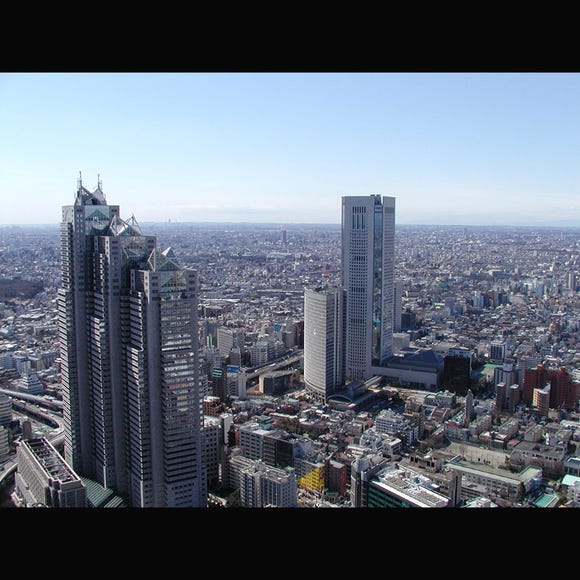
Tokyo Metropolitan Government
Landmarks
Shinjuku
-

Shibuya Crossing
Downtown
Shibuya
-

Kappabashi Street
Old Towns (Shitamachi)
Asakusa
-

Ameyoko Shopping Street
Old Towns (Shitamachi)
Ueno
-

Simply Oishii Wagashi School Discover Japanese Culture Through Wagashi: A Hands-On Experience!
by: Guest Contributor
-

LaLaport TOKYO-BAY North Building Now Open: Shop, Dine & Enjoy Events at LaLa arena, Just 2 Stops from Disney
by: Wemmy Chau
-

2025 Autumn Colors Report: Kurobe Gorge Nearing Peak
by: Timothy Sullivan
-

[Extended Offer!](12% OFF KKday Coupon) Mt. Fuji Autumn Leaves, Powder Snow & More! 15 Best Tours to Experience Japan in Fall & Winter
-

Enjoy Japan's Gorgeous Winter Lights! Ride the Romancecar to Shonan no Hoseki Illumination
by: Guest Contributor
-

Don't Miss Out! The One Thing You Must Do Before Shopping at Mitsui Shopping Park LaLaport: Get Your Max 10% OFF Coupon Book
Inspiration for Accommodations
-
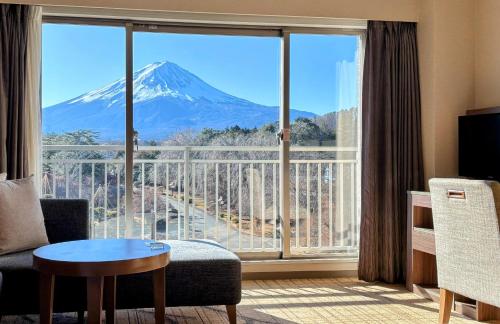
Enjoy Mt. Fuji from the Comfort of Your Room! Recommended Ryokan with Mt. Fuji View
-

Stay Near the Cherry Blossoms! Hotels for Cherry Blossom Viewing in Tokyo
-

Family-Friendly Hotels with Free Shuttle to Disneyland: Convenient Access for a Magical Stay
-
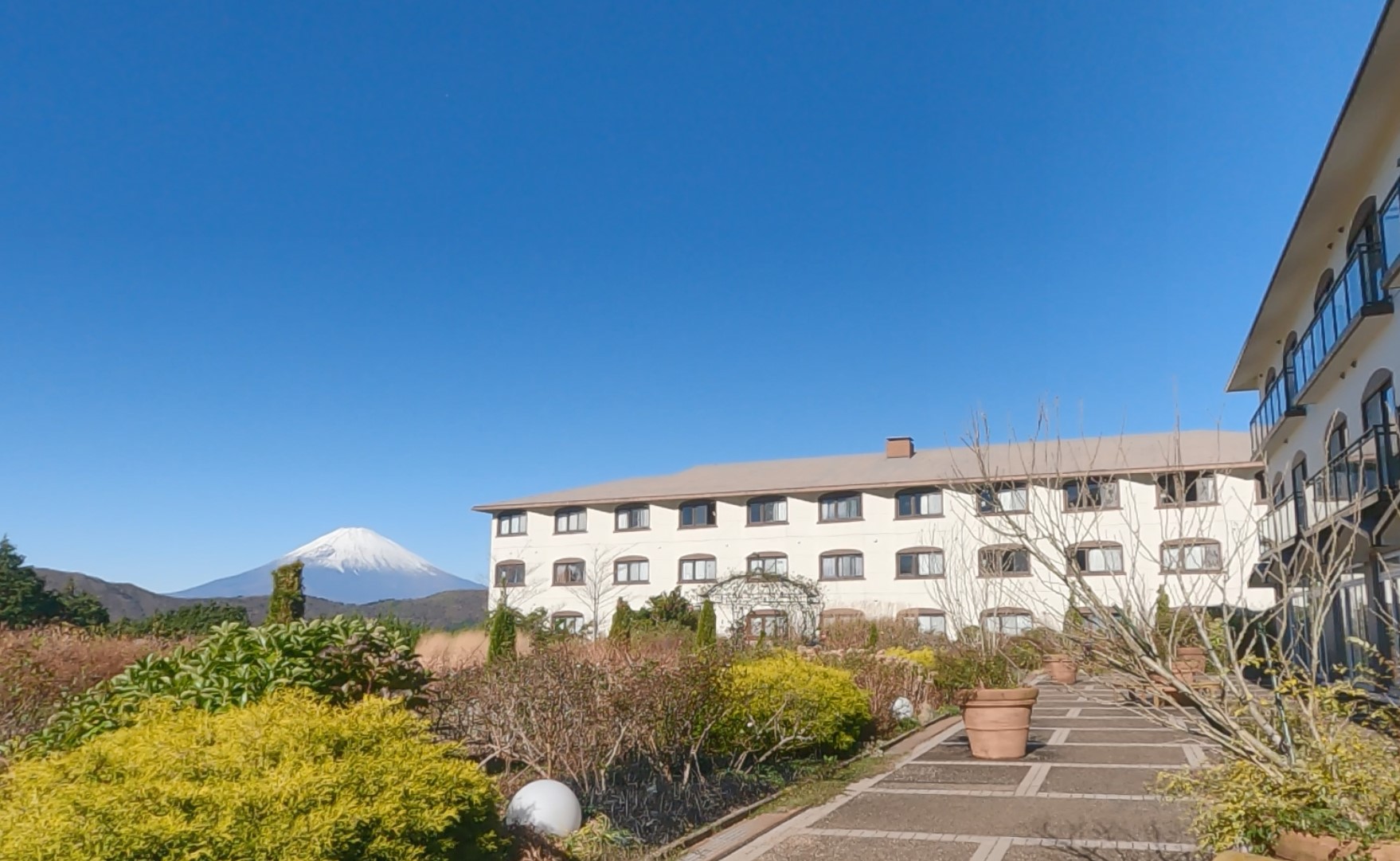
Top Ranked Hakone Hotels with Mt. Fuji View: Enjoy Stunning Scenery from Your Private Space
-
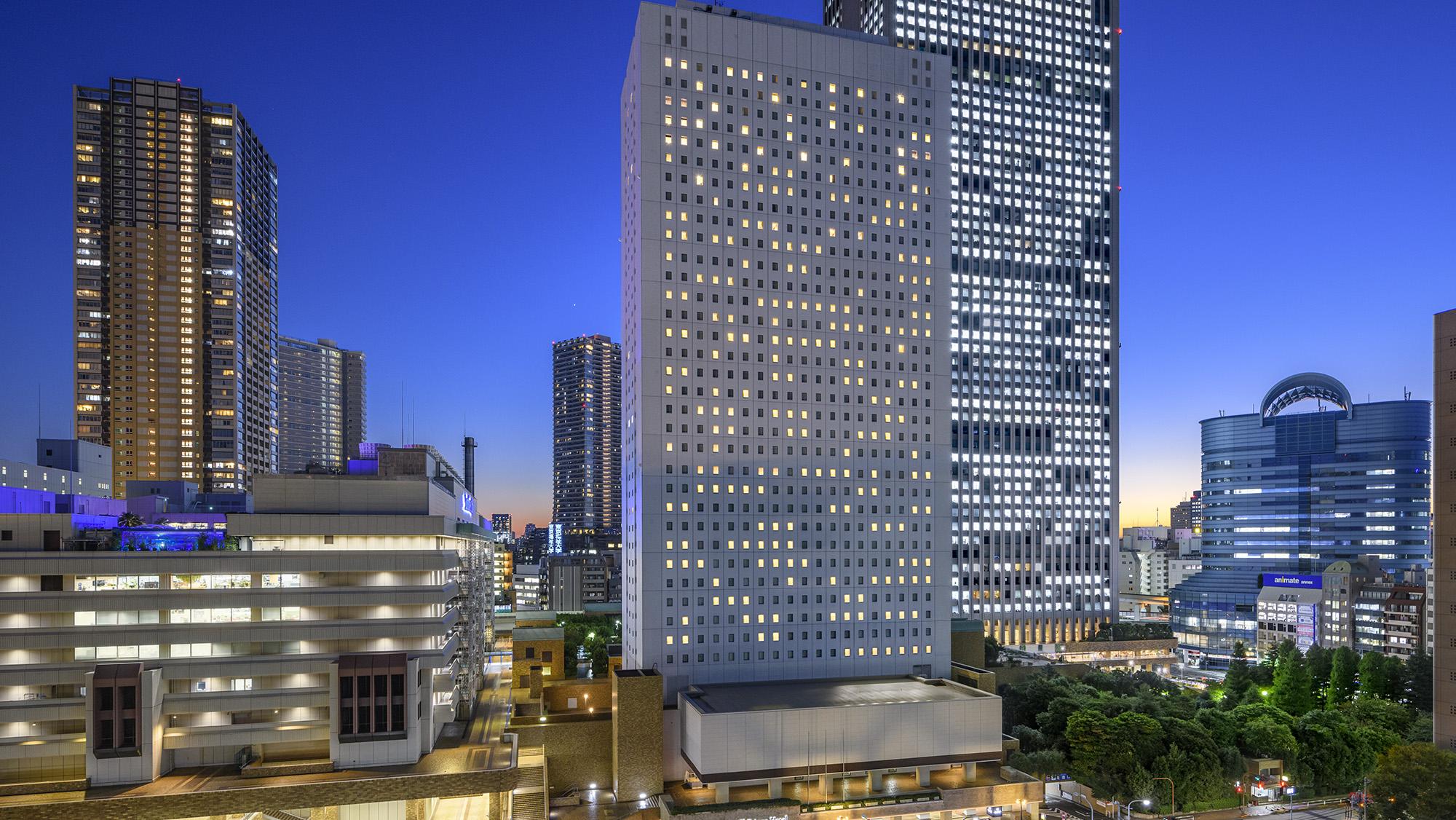
Convenient Tokyo Hotels with Airport Shuttle: Ideal for Families and Heavy Luggage
-

Stunning Tokyo Tower View Hotels: Enjoy Spectacular Scenery from Your Private Space
-

Convenient Asakusa Hotels with Kitchens: Ideal for Extended Family Visits
-

Experience Luxury: Hakone's 10 Best Five-Star Accommodations
-
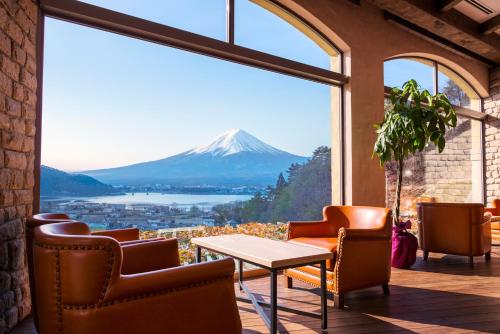
Enjoy Mt. Fuji Autumn Leaves! Top Hotels Near the Popular Autumn Leaves Corridor
-

Experience Hakone Fall Foliage from Your Room with Stunning Views
-

Top Events & Festivals in Asakusa (Tokyo): Discover Year-Round Traditions and Fun
-

Tokyo Roppongi|Roppongi Station Area Map & Sightseeing Information
-

Easy Day Trip from Tokyo! Ultimate Sightseeing Guide for Hakone & Lake Ashinoko!
-

Awa Odori Comes to Shibuya June 21: Experience the Soul of Tokushima in the Heart of Tokyo
-

Numazuko Kaisho in Ueno: Good Quality, All-You-Can-Eat Seafood for Just US$12!?
-

Asakusa Sanja Matsuri (May 16-18, 2025): Inside One of Tokyo's Greatest Festivals
by: Jiei Kurabayashi
- #best ramen tokyo
- #what to buy in ameyoko
- #what to bring to japan
- #new years in tokyo
- #best izakaya shinjuku
- #things to do tokyo
- #japanese nail trends
- #what to do in odaiba
- #onsen tattoo friendly tokyo
- #daiso
- #best sushi ginza
- #japanese convenience store snacks
- #best yakiniku shibuya
- #japanese fashion culture
- #best japanese soft drinks
























